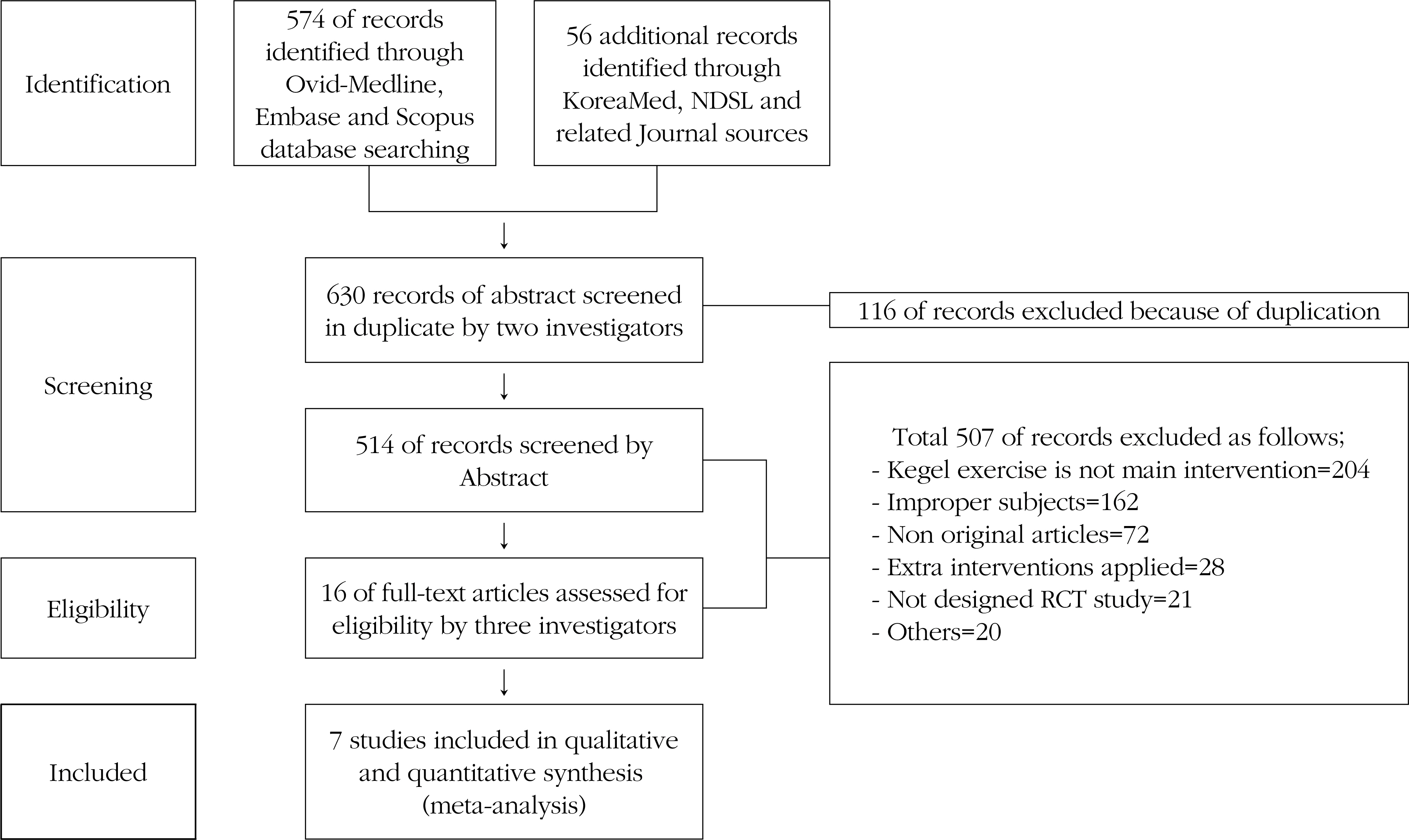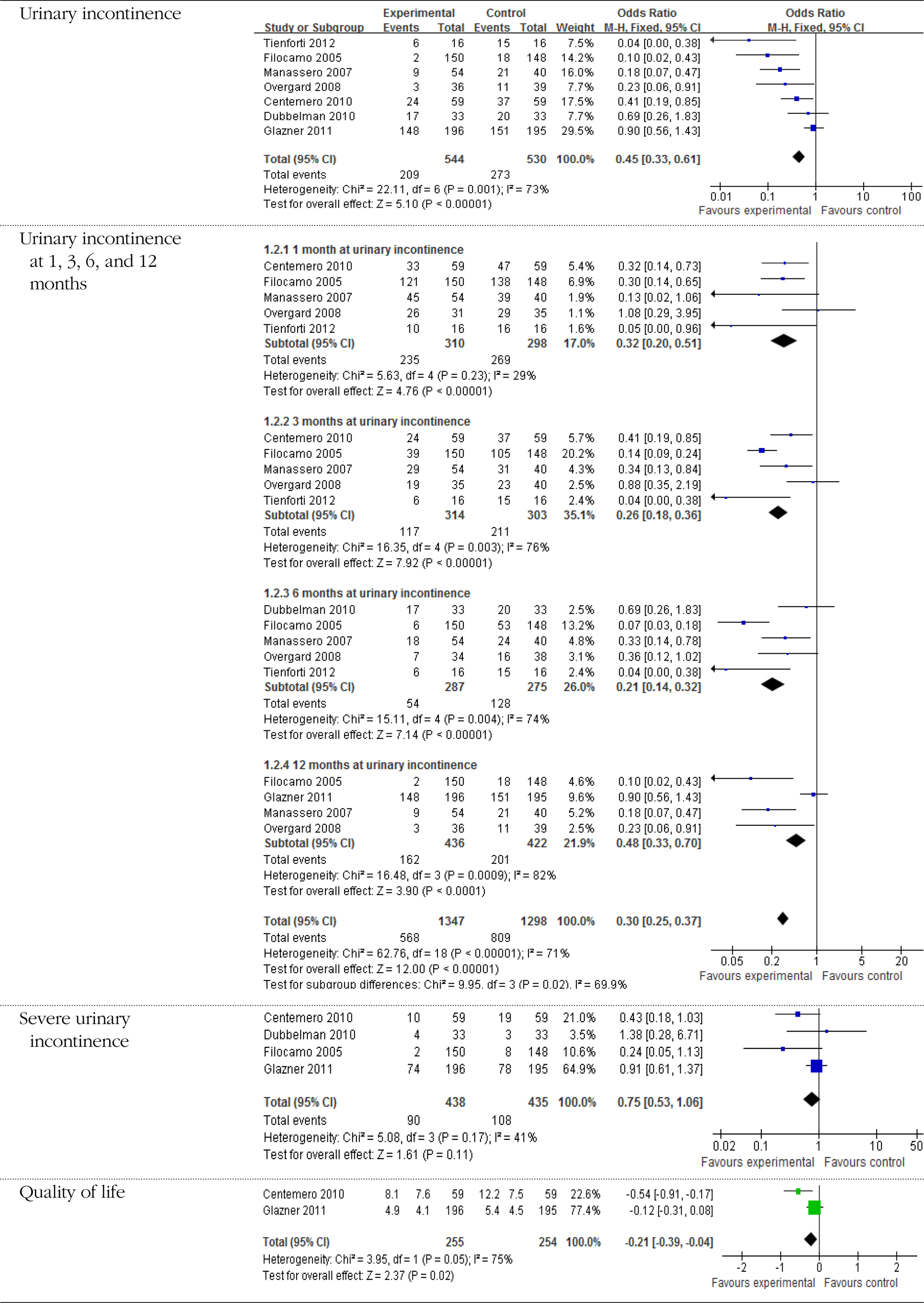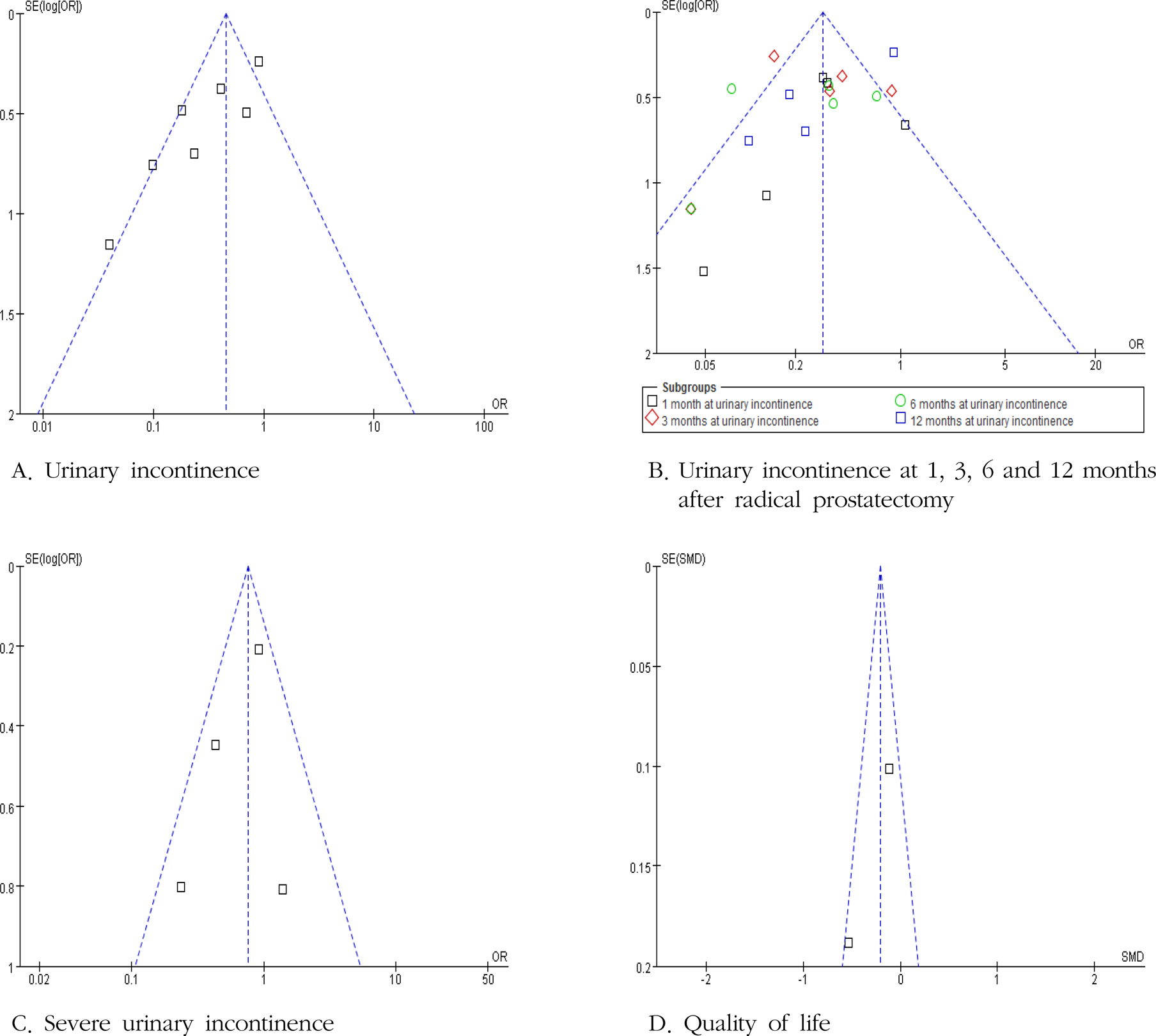1School of Nursing, Pai Chai University, Daejeon
2Department of Nursing Service, Korea University Anam Hospital, Seoul
3Quality Improvement Team, Korea University Anam Hospital, Seoul
4Department of Nursing Service, Korea University Anam Hospital, Seoul
5Research Development Team, Korea Health Promotion Foundation, Seoul, Korea
© 2013 Korean Society of Adult Nursing
This is an Open Access article distributed under the terms of the Creative Commons Attribution Non-Commercial License (http://creativecommons.org/licenses/by-nc/3.0/) which permits unrestricted non-commercial use, distribution, and reproduction in any medium, provided the original work is properly cited.





Characteristics of Selected Studies
| Year of publication | Authors | Country | Participants | Kegel exercise | drop out n (%) | Follow up (months) | Outcomes measures | ||||||
|---|---|---|---|---|---|---|---|---|---|---|---|---|---|
| Inclusion criteria | Total | Exp. | Cont. | Age (year) | UI | Severe UI | UI Sx & QoL | ||||||
| 2012 | Tienforti et al. | Italy | cT1a-cT2b prostate cancer with RP | 32 | 16 | 16 | 64~67 | Supervised training 3 sets daily of 10 min each 5 seconds contraction and relaxation | none | 1, 3, 6 | ○ | ||
| 2011 | Glazner et al. | UK | Prostate cancer with RP | 411 | 205 | 206 | 62.3 | 3 months training with therapist | 20 (4.7) | 12 | ○ | ○ | ○ |
| 2010 | Centemero et al. | Italy | cT1a-cT2a-b prostate cancer with open nerve-sparing RP | 118 | 59 | 59 | 58~60 | Training guided by a single physiotherapist twice per week for 1 month | None | 1, 3 | ○ | ○ | ○ |
| 2010 | Dubbelman et al. | Netherlands | Prostate cancer with RP | 79 | 35 | 44 | 64 | Therapist guided training One series of 10 contractions performed during a period of 1~3 min; 150 contractions per daily | 13 (16.5) | 6 | ○ | ○ | |
| 2008 | Overgard et al. | Norway | clinically localized prostate cancer operated with open RP | 85 | 42 | 43 | 60~62 | Training guided by physiotherapist for 45 min once weekly; 3 sets of 10 contractions daily | 5 (5.9) | 1, 3, 6, 12 | ○ | ||
| 2007 | Manassero et al. | Italy | clinically localized prostate cancer operated with RP | 107 | 54 | 53 | 67~68 | Training program; 45 contractions (3 sessions of 15 per daily) | 13 (12.1) | 1, 3, 6, 12 | ○ | ||
| 2005 | Filocamo et al. | Italy | T1 or T2 prostate cancer with RP | 300 | 150 | 150 | 66.8 | Daily 3 sets of exercises; 10 contractions lasting 5 seconds with 10 seconds of muscle relaxation | 2 (0.7) | 1, 3, 6, 12 | ○ | ○ | |
RP=radical prostatectomy; Exp.=experimental group; Cont.=control group; UI=urinary incontinence; UI Sx & QoL=urinary incontinence symptoms and quality of life.
RP=radical prostatectomy; Exp.=experimental group; Cont.=control group; UI=urinary incontinence; UI Sx & QoL=urinary incontinence symptoms and quality of life.